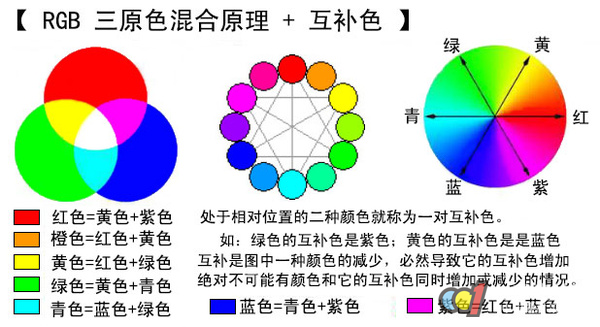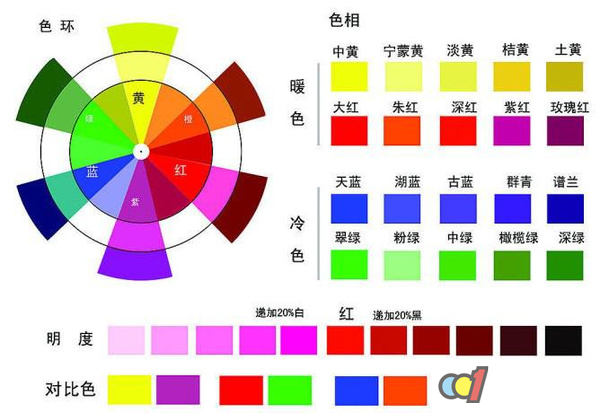The composition of each color and even the water content are different. It is impossible to rely on dogmatic theory. It depends on what kind of color is needed in actual operation and what kind of feeling is needed. The painter's colorist can be independent from the beginning to the self, and the color master will take a little bit of learning. For beginners, don't be anxious in the coloring, and you can't make it yourself. If you rely on your own groping, you will take a lot of detours. You must learn to do more and ask for more teachers. Everything has a gradual process that will slowly become better. For example, familiar with a series of pigment names, etc., to find some color information of the color palette.

Paint coating coloring technology tips:
(1) If the painter first takes the apprentice, the apprentice will first carefully observe and study the color of the standard sample, and combine the basic white paint process formula to understand the color range and pigment composition of the color of the paint to be formulated. When you are not very sure, you can first test the sample in the laboratory to roughly determine the variety and quantity of the desired color paste. After you have a good idea, let the master confirm and then match the color on the production line.
(2) Correct selection of color paste Because the color of the pigment often has a color head, it is easier to register the color by selecting the color (slurry) of the appropriate color head. For example, with the green color, you should use a yellow pigment with a green head and a blue pigment with a yellow head; for example, with a purple color, a blue pigment with a red head and a red pigment with a blue head: with orange, with a belt The yellow pigment of the yellow head is matched with the yellow pigment with red head. Otherwise, the color of the composition will be reduced in brightness.
(3) Under the premise of ensuring the color is satisfactory, the variety of the selected toner should be as small as possible. Because the more varieties of pigments are added, the lower the brightness of the blended, the darker the color.
(4) Under good agitation, slowly add the coloring paste to the wood to adjust the depth first, and then adjust the color tone carefully. When you need to add several color pastes, add a larger amount first, then add a smaller amount, so that you can easily find the color. The amount of slurry should be less than the estimated amount each time, especially when it is close to the color matching end point, especially to avoid over-heading.
(5) Note for beginners tones. Just add a small amount of complementary color to make the color brightness weaken. Add a small amount of black, gray, and white to make the color tone change to a large extent. Therefore, be careful when adding, to prevent overshoot.
(6) When the broth of the color paste is not much different from the bristles of the latex paint, the two are easier to mix evenly. Therefore, when the color broth is too large, it can be diluted with ethylene glycol or water to the varnish of the lacquer. Re-invest after similar.
(7) Colorimetric is the comparison of the color of the dry paint film of the formulated latex paint with the dry paint film of the sample or sample, rather than comparing the color of the paint liquid in the container, nor comparing their wet film s color. Note that the color of the dry film of the paint film is slightly darker than the color of the wet film to prevent over-coloring.
(8) Pay attention to the background of the bottom plate of the two paint films when colorimetric. It is best to apply the two kinds of paints to be colorimetrically coated on the same bottom plate by the same film-forming device, and the color of the paint film after drying.
Common paint and paint mixing:

Red + yellow = red orange (red and yellow less, commonly known as orange)
Orange (equal mixing, commonly known as orange)
Yellow + blue = yellow green (yellow more blue less) grass green
Green (equal mixing) in green
Blue green (blue more yellow less) dark green
Blue + red = red purple (red and blue less)
Purple (equal mixing)
Blue-violet (blue and red less) The original colors are properly mixed: the two colors are properly mixed:
Red-gray: red, yellow, blue, less yellow gray: orange plus yellow
Yellow-gray: yellow, red, blue, less blue, gray, green, purple
Blue-gray: blue, red, yellow, red, gray, orange, purple
Less red + less yellow + more white = flesh color
Cooked brown = lemon yellow + pure black + rose red
Pink Rose Red = Pure White + Rose Red
Vermilion = Lemon Yellow + Rose Red
Dark red = rose red + pure black
Fuchsia = pure purple + rose red
Vermiculite red = rose red + lemon yellow + pure black
Powder blue = pure white + sky blue
Blue green = grass green + sky blue
Gray blue = sky blue + pure black
Light gray blue = sky blue + pure black + pure purple
Pink green = pure white + grass green
Yellow green = lemon yellow + grass green
Dark green = grass green + pure black
Pink purple = pure white + pure purple
Brown = rose red + pure black
Powder lemon yellow = lemon yellow + pure white
Rattan yellow = lemon yellow + rose red
Orange = lemon yellow + rose red
Earthy yellow = lemon yellow + pure black + rose red
[Follow the WeChat public number "Jiuzheng Paint Network"; pay attention to surprises, scan code to view "If your husband is selling paint..." Jiuzheng Coating Network Exchange Group]
It has the advantages of a peristaltic pump, and a single tube is used alone
without cross-contamination; a wide flow range, reversible forward and reverse operation.Replaceable
charging power, light and portable, flexible operation, can easily cope with stratified sampling, deep water
sampling, sampling of gas samples, high-viscosity liquids, suspended liquid containing tiny particles, etc. It is
especially suitable for field operations.
Portable Peristaltic Pump,Hand Held Peristaltic Pump,Battery Powered Peristaltic Pump,Sampler Peristaltic Pump
Baoding Chuangrui Precision Pump Co., Ltd. , https://www.chuangruipump.com